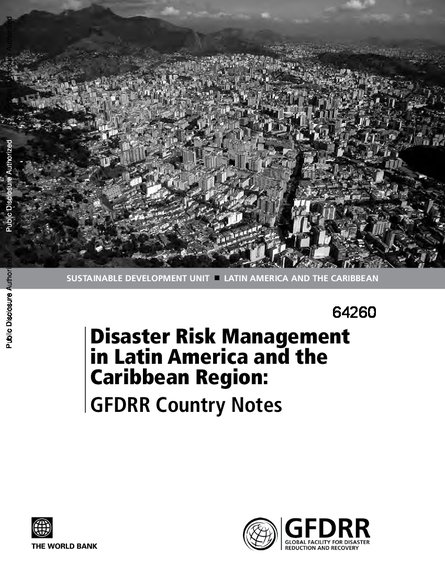
Latin America and the Caribbean Region (LCR) is exposed to a wide variety of natural hazards including earthquakes, volcanoes, storms, extreme temperatures, droughts, floods, landslides, etc., many of which are regularly aggravated by the recurrent El Nino and ENSO phenomenon. The global trend toward increasing climate variability is likely to exacerbate many of these hazards. The World Bank Natural Disaster Hotspots study (Dilley et al. 2005) indicates that seven among the world's top 15 countries exposed to three or more hazards are located in LCR.
Similarly, 15 among the world's top 60 countries exposed to two or more hazards are LCR countries. The Latin American and Caribbean governments have long recognized the need to address disaster risk, and their efforts 'to develop the tools to effectively mainstream disaster risk management into development activities' (ibid., p. 1) have evolved over the last few decades. Since the mid-20th century, most of the countries in the region were working to address disasters through their respective civil protection agencies. Just like elsewhere in the world, efforts focused on ex-post response and recovery needs. While these efforts are undeniably important, they are increasingly proving to be insufficient. Over the last decade, governments, intergovernmental, non-governmental, and development organizations have gradually shifted the focus of their efforts towards ex-ante approaches to disaster risk management, with a special focus on disaster risk reduction via reducing vulnerability, capacity building, better information, and institutional strengthening